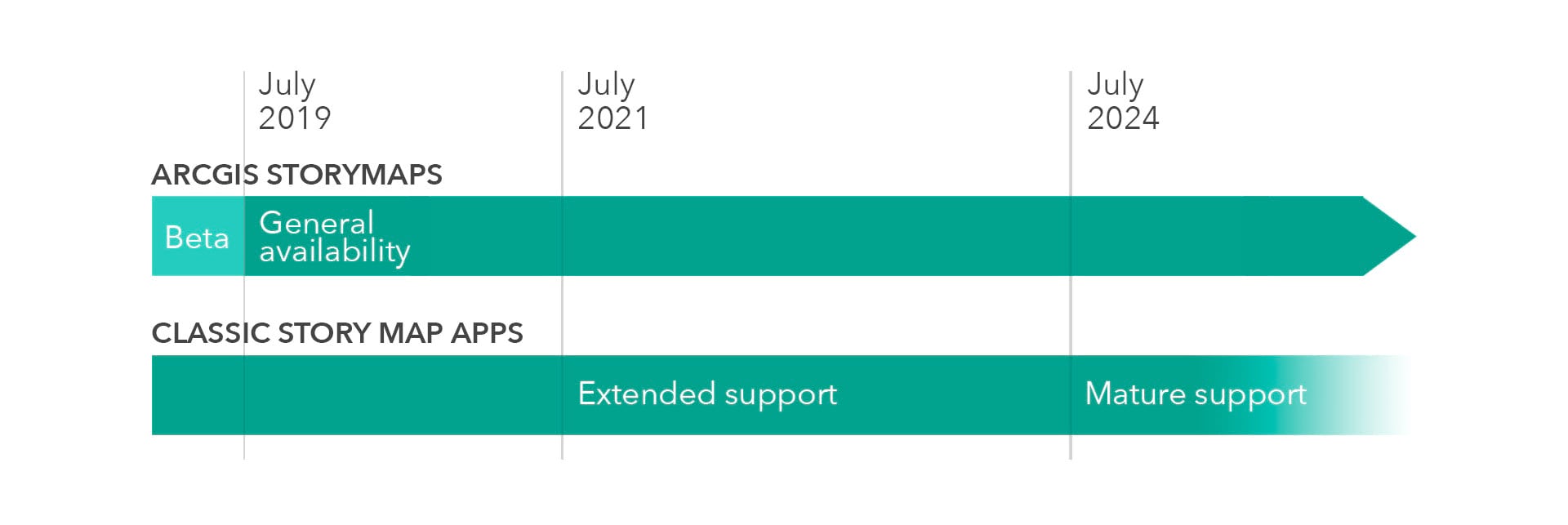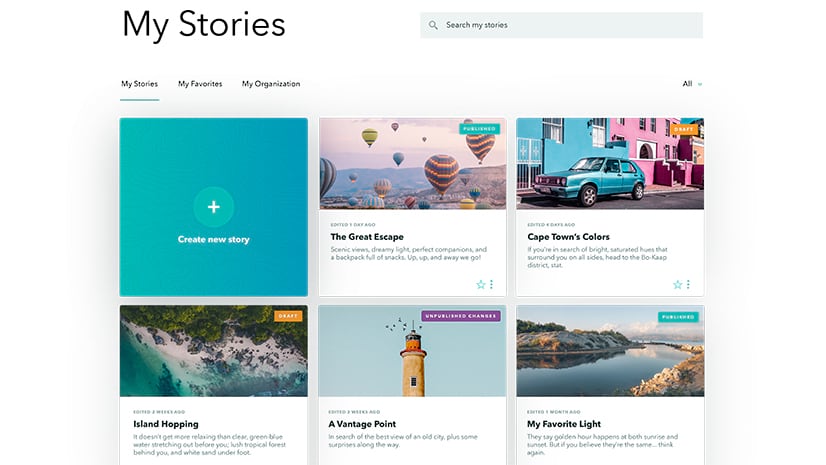What we’ve seen and heard
Back in July when we launched the new ArcGIS StoryMaps we also announced an initial transition timeline for our classic storytelling templates (Story Map Journal, Cascade, Tour, etc.). Since then, we’ve been monitoring the usage of both the new and classic story builders and listening to the feedback we’ve received from our community of storytellers. Now that we’re a few months into this new project, we wanted to revisit this timeline.
We’ve seen an overall increase in story production, and specifically you’re creating a LOT of stories with the new ArcGIS StoryMaps. In fact, when we look at the daily numbers, you’re creating significantly more stories with the new StoryMaps than with all the other classic builders combined.
But in addition to your adoption of the new ArcGIS StoryMaps, something we’ve heard through direct feedback is that some of you are nervous about the transition from the classic templates. Some are uncertain about what to do for upcoming projects that require a feature that’s not yet available in the new StoryMaps. Others told us that while you love the new StoryMaps, there are internal processes and documents to update and people to train, and those things take time.
When it comes to the classic stories you’ve already created, rest assured that they’ll be around for a long time. And, in response to what you’ve told us, we’re happy to announce that we’ve updated the details of our transition plan to help put your minds even more at ease.
An updated timeline
The previous plan had milestones set for when classic builders would eventually be restricted from both creating new stories and editing existing stories. Based on your feedback, these milestones have been removed. As long as the classic templates are available, they will work as they do today with respect to creating and editing stories.
The new timeline indicates the classic storytelling templates will simply enter a period of extended support in July 2021 and then enter the mature support phase in July 2024. At no time during this period will the classic builders be restricted from creating or editing stories, so you’ll be able to make new stories or edit stories you’ve already made. These dates simply indicate when certain update and maintenance activities will change. Due to future web browser and technology updates, there may be situations where some aspects of stories may not work as expected forever, but we are committed to making reasonable efforts to keep all the core features of classic stories functional throughout these phases.

After July 2024, your stories may still be available; however, after this time there will be no further planned maintenance updates to the templates, so future browser updates or platform changes may affect the use or performance of the templates.
More detail about the phases of Esri product lifecycle can be found here.
Resources to get up and running with the new ArcGIS StoryMaps
If you’ve been thinking about creating more of your stories with the new builder, but haven’t pulled the trigger yet, we have a number of resources that you might find helpful:
- Moving to the new ArcGIS StoryMaps, a helpful guide for authors transitioning from Esri’s classic storytelling templates
- Getting started with ArcGIS StoryMaps, a step-by-step tutorial for using the new builder
- Recreating a classic story with ArcGIS StoryMaps, a look at how Allen Carroll gave an old story new life with our next-generation tool
Hopefully these articles make adopting ArcGIS StoryMaps even easier for you. If you have further questions or concerns, please let us know. Your feedback is foundational to our success, and we wouldn’t be where we are today without you.
Banner photo by Justin Luebke on Unsplash




Commenting is not enabled for this article.